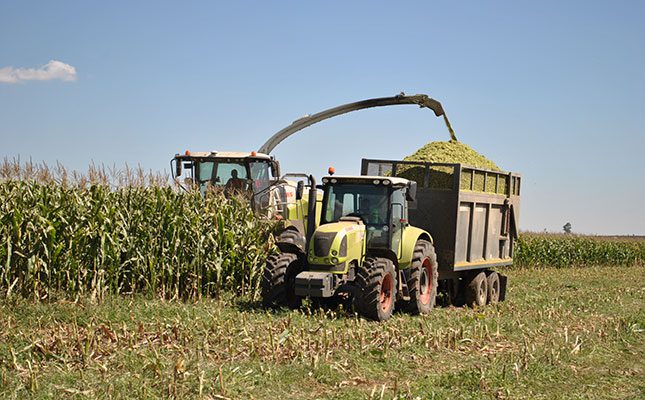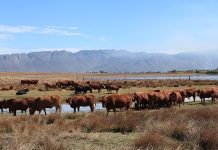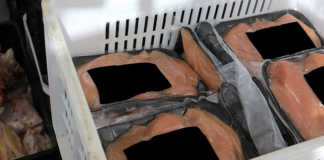
Silage is one of the most valuable storage systems for high-quality roughage, and the only storage system that, when managed properly, improves with age, Richardt Venter, a silage consultant of Agsci Unlimited, said during a presentation at the World Veterinary Association Congress recently hosted in Cape Town.
Poor-quality silage, however, will do more harm than good. It will negatively impact animals and may even lead to mortalities.
READ Getting a silage maize crop into the bunker chop-chop
“Some people think they can dilute the impact of ‘spoilt’ silage by mixing it with good silage, but this will merely exacerbate the problem by turning the good silage bad also. Don’t feed spoilt silage to animals. It will have a negative impact on the animals,” Venter warned.
He said problems with poor feed intake, poor immunity and poor reproduction could often be traced back to poor silage quality.
For maize silage, he recommends that the dry matter content should ideally range between 35% and 40%. Values below 30% indicate that the maize was harvested too early, or too wet, while values above 40% indicate that it was harvested too late, or dry.
Silage that is too wet or dry will negatively impact feed intake and result in animals needing more additional feed to make up for the lower intake.
Ash, which gives an indication of the mineral content of the silage, should ideally be below 4% of dry matter content. Venter said that higher values could be ascribed to soil contamination during silage, or to the silage being cut too low.
The risk with having a high mineral content is that some of the minerals might interfere with the uptake of other nutrients.
The starch component of silage gives an indication of the energy content and digestibility. It should ideally be above 30% of dry matter, with lower values indicating either poor cultivar choice or that the silage was harvested too early.
“We manage to produce maize silage with a starch content over 40%, so there really is no reason why it should be below 30%,” Venter said.
READ The science of producing good silage
The pH of the silage should not be above 4. Values that are higher indicate insufficient preservation or, probably, a slow process. “Something is wrong with the silage-making process if maize silage has a pH higher than 4,” he said.
The lactic acid value should ideally be around 5% of dry matter content, with values of below 4% indicating insufficient or incomplete fermentation, normally because of too few lactic acid bacteria.
Acetic acid values above 2,5% indicate a too early harvest, in other words the silage is too wet, or slow speed of ensiling. The lactic acid to acetic acid ratio should ideally be more than two for lactic acid, to one for acetic acid.
Ammonia levels above 9% of crude protein is an indication of slow speed of ensiling, or poor oxygen removal.
Venter cautioned that farmers should take representative samples when sending these to laboratories for analysis.
But farmers can also use their senses to physically evaluate the quality of their silage. Firstly, the silage should have a neutral smell.
A vinegar-like smell is associated with high acetic acid and enterobacteria, which in turn indicates that the silage was made too wet or too slow.
If the silage smells like rancid butter, there is too much butyric acid, also an indication of too wet silage and the silage process being too slow.
A pleasant fruity smell is usually produced by esters, emanating from yeast, typically because of the plant material being too dry when harvested.
When a handful of silage is taken and squeezed, no water should run out. If water runs out, the silage is too wet, according to Venter.
Looking at the silage bunker, top-layer losses are typically caused by insufficient compaction before closure and sheets not being packed down enough.
Top-layer spoilage can lead to intake problems and potential mycotoxin problems in animals.
Mould on the face of the bunker is typically because of a too slow feed-out, and the bunker being too large for the size of the farming operation.
Mould pockets, or balls inside the silage, usually occur because of soil contamination, for instance by tractor wheels, during the ensiling process.
Venter said that whole maize kernels indicate that no maize cracker was used, or a non-functioning cracker.
Farmers can also measure the temperature of the silage with a thermometer. The temperature at the face of the bunker, about 2cm to 5cm deep, should be the same as the ambient temperature.
Higher temperatures indicate anaerobic instability, which could be due to poor face management, or the silage being made too slow. This in turn will result in high microbial counts.
A core temperature, taken at least 50cm deep, measuring above 30°C indicate that the silage is either young, or made too slow, which led to a high microbial count or contamination.
This in turn would have resulted in high protein breakdown and energy losses.











